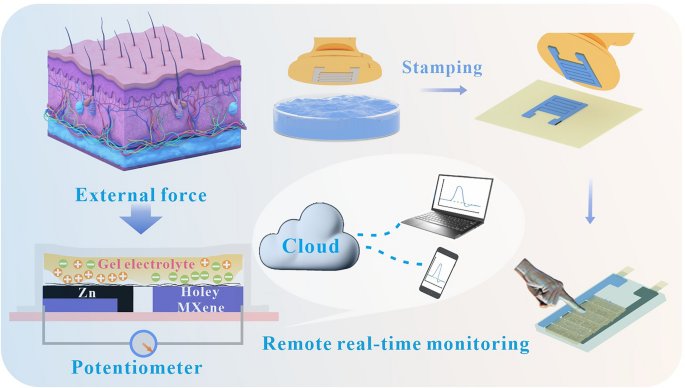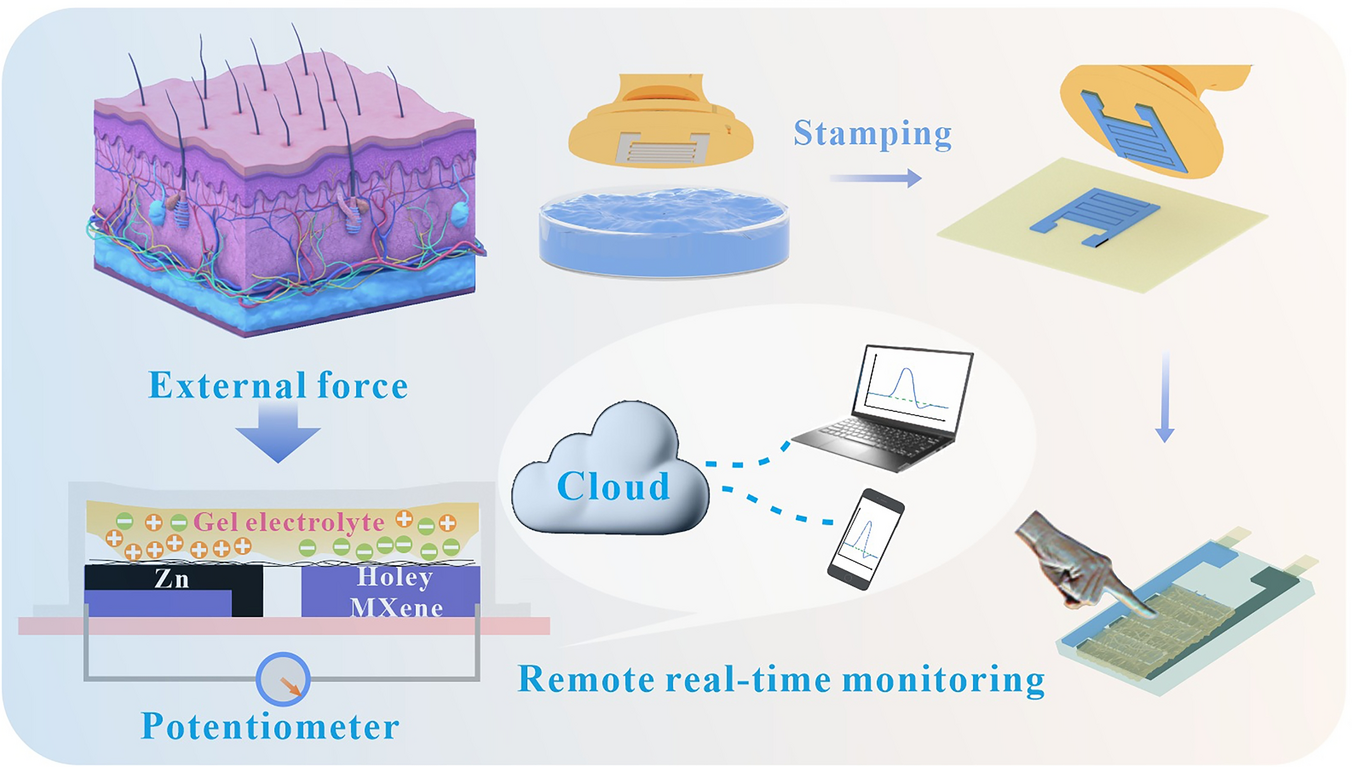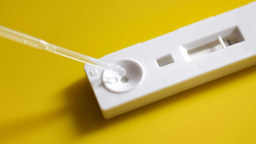Flexible Monolithic 3D‑Integrated Self‑Powered Tactile Sensing Array Based on Holey MXene Paste
Published in Materials and Computational Sciences

As wearable electronics and human-machine interfaces rapidly evolve, the demand for highly integrated, flexible, and self-powered sensing systems has never been greater. Now, researchers from Anhui University and Hubei University of Automotive Technology, led by Professor Yang Yue, Professor Siliang Wang, Professor Yanan Ma, and Professor Li Xu, have developed a breakthrough flexible tactile sensing system. Inspired by human skin, this monolithic 3D-integrated device uses holey MXene paste to achieve ultra-high integration, low power consumption, and intelligent user identification.
Why Holey MXene-Based 3D Integration Matters
- Self-Powered Operation: The vertical one-body unit (VOU) combines a microsupercapacitor and pressure sensor, eliminating the need for external power supplies.
- High Integration: Monolithic 3D design enables dense packing of functional units, reducing footprint and wiring complexity.
- Low Power Consumption: The device operates in a near-zero-power “silent” state and only consumes microwatts during active sensing.
- Mechanical Flexibility: The holey MXene paste enables scalable, low-cost fabrication via blade-coating and stamping, compatible with large-area flexible substrates.
Innovative Design and Features
- Holey MXene Paste: In-plane mesopores enhance ion transport, prevent nanosheet stacking, and allow multifunctional use as sensor, electrode, and interconnect.
- Vertical One-Body Unit (VOU): A single unit acts as both energy storage and sensor, minimizing vertical interfaces and improving structural integrity.
- Zinc-Ion Microsupercapacitor (ZIMSC): Offers ultra-low self-discharge (1.875 mV/h) and long cycle life (>80,000 cycles), outperforming conventional symmetric MSCs.
- Gel Electrolyte Microstructuring: Surface-patterned gel modulates sensitivity, linearity, and detection range, enabling tunable tactile response.
Applications and Future Outlook
- Smart Access Control: Integrated with deep learning, the system identifies users based on unique pressing behaviors (e.g., typing rhythm, force profile), achieving 98.67% accuracy.
- Human–Computer Interaction: Demonstrated in LED brightness control, wireless data transmission, and real-time pressure mapping.
- Scalable Manufacturing: Holey MXene paste enables rapid, large-area fabrication of arrays and patterns, paving the way for industrial-scale production.
- Environmental Compatibility: All components (MXene, gel, substrate) are biodegradable or recyclable, supporting sustainable electronics.
Challenges and Opportunities
The study highlights the potential of multifunctional nanomaterials in next-generation flexible electronics. Future research will focus on integrating additional sensing modalities (e.g., temperature, humidity) and expanding the system for biomedical monitoring, AR/VR interfaces, and personalized robotics.
This work presents a new paradigm for flexible, intelligent, and sustainable sensing systems, combining material innovation, 3D integration, and AI-driven recognition. Stay tuned for more cutting-edge developments from Professor Yang Yue and collaborators at Anhui University and Hubei University of Automotive Technology!
Follow the Topic
-
Nano-Micro Letters

Nano-Micro Letters is a peer-reviewed, international, interdisciplinary and open-access journal that focus on science, experiments, engineering, technologies and applications of nano- or microscale structure and system in physics, chemistry, biology, material science, and pharmacy.






Please sign in or register for FREE
If you are a registered user on Research Communities by Springer Nature, please sign in